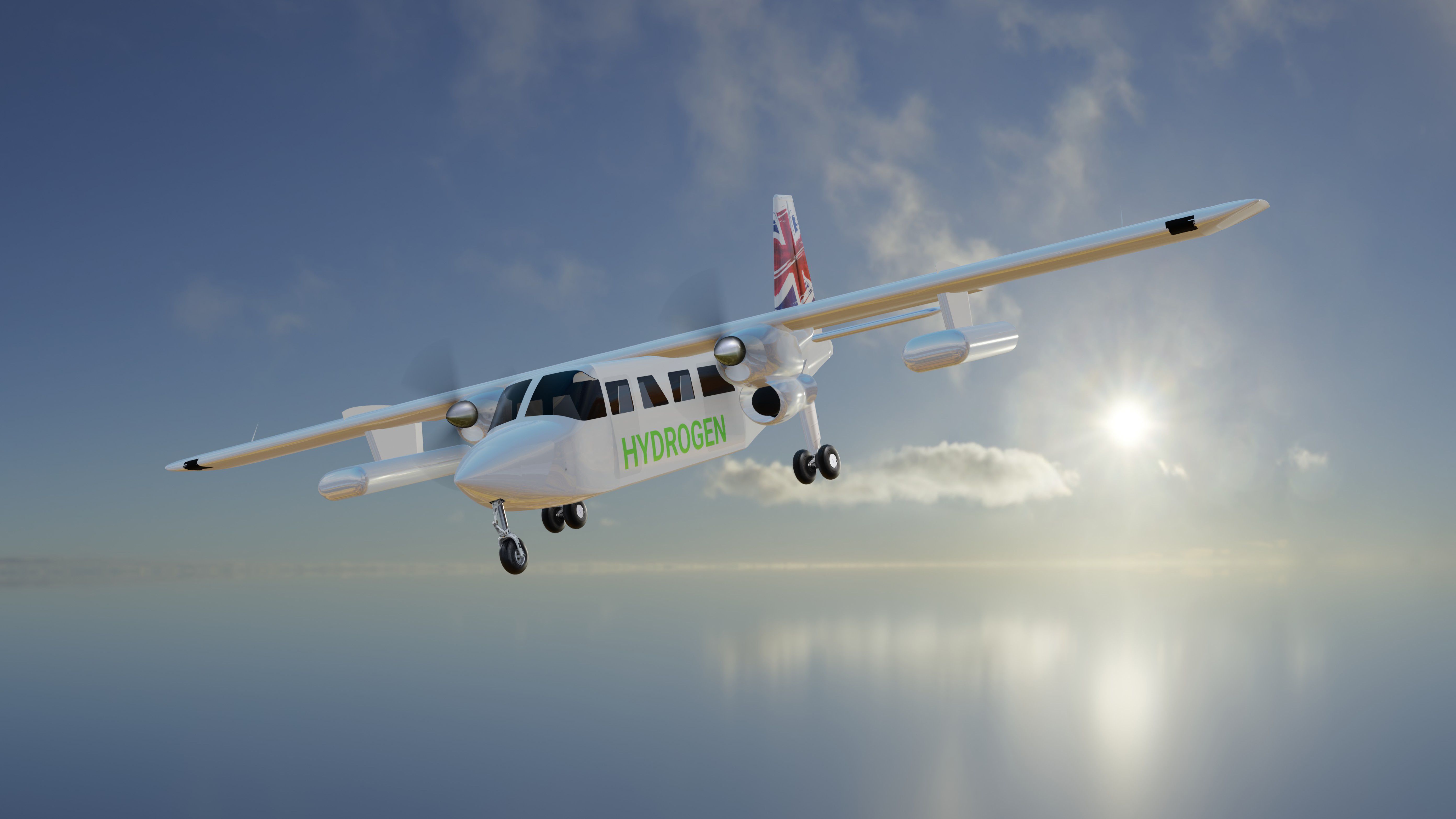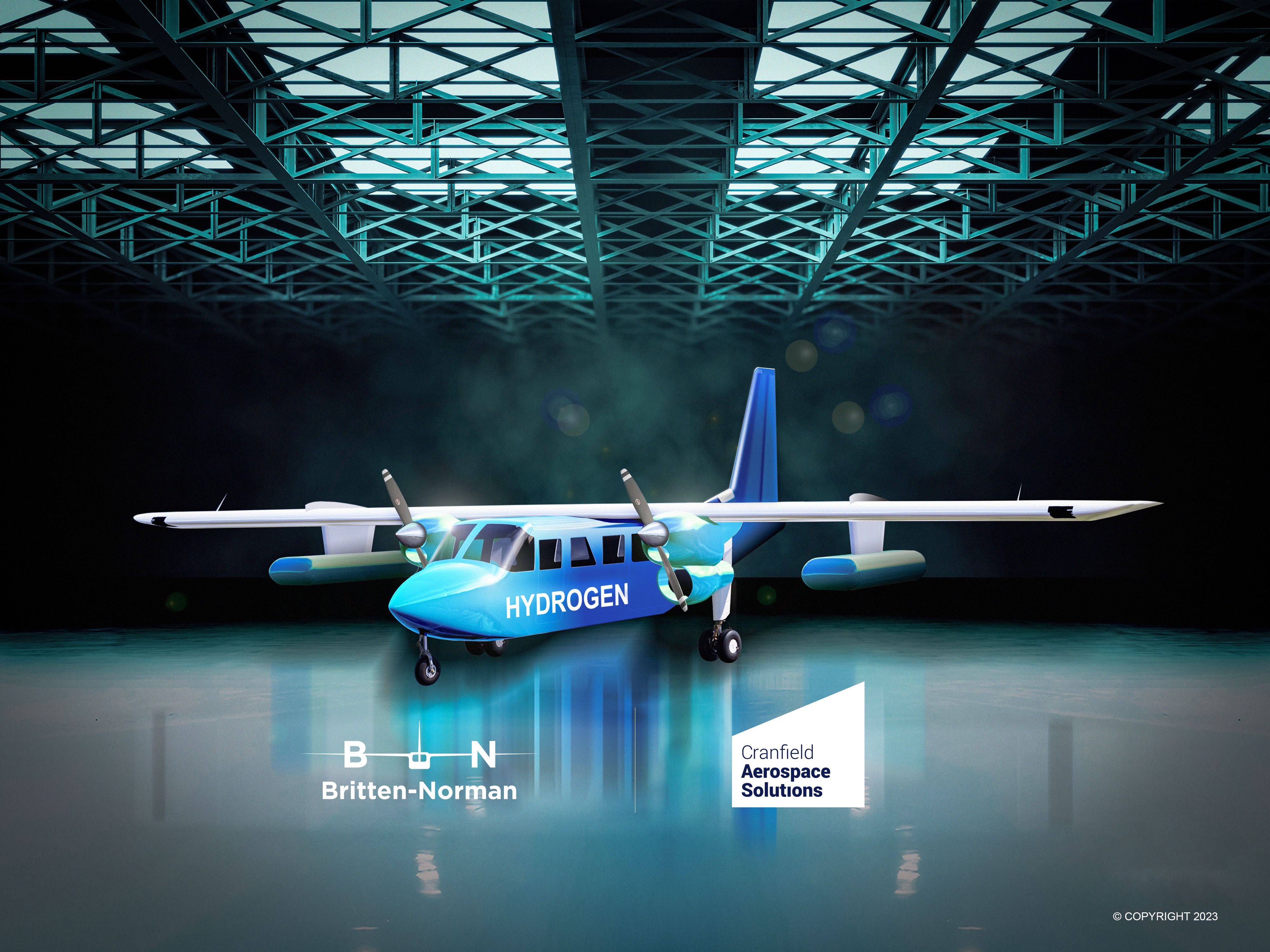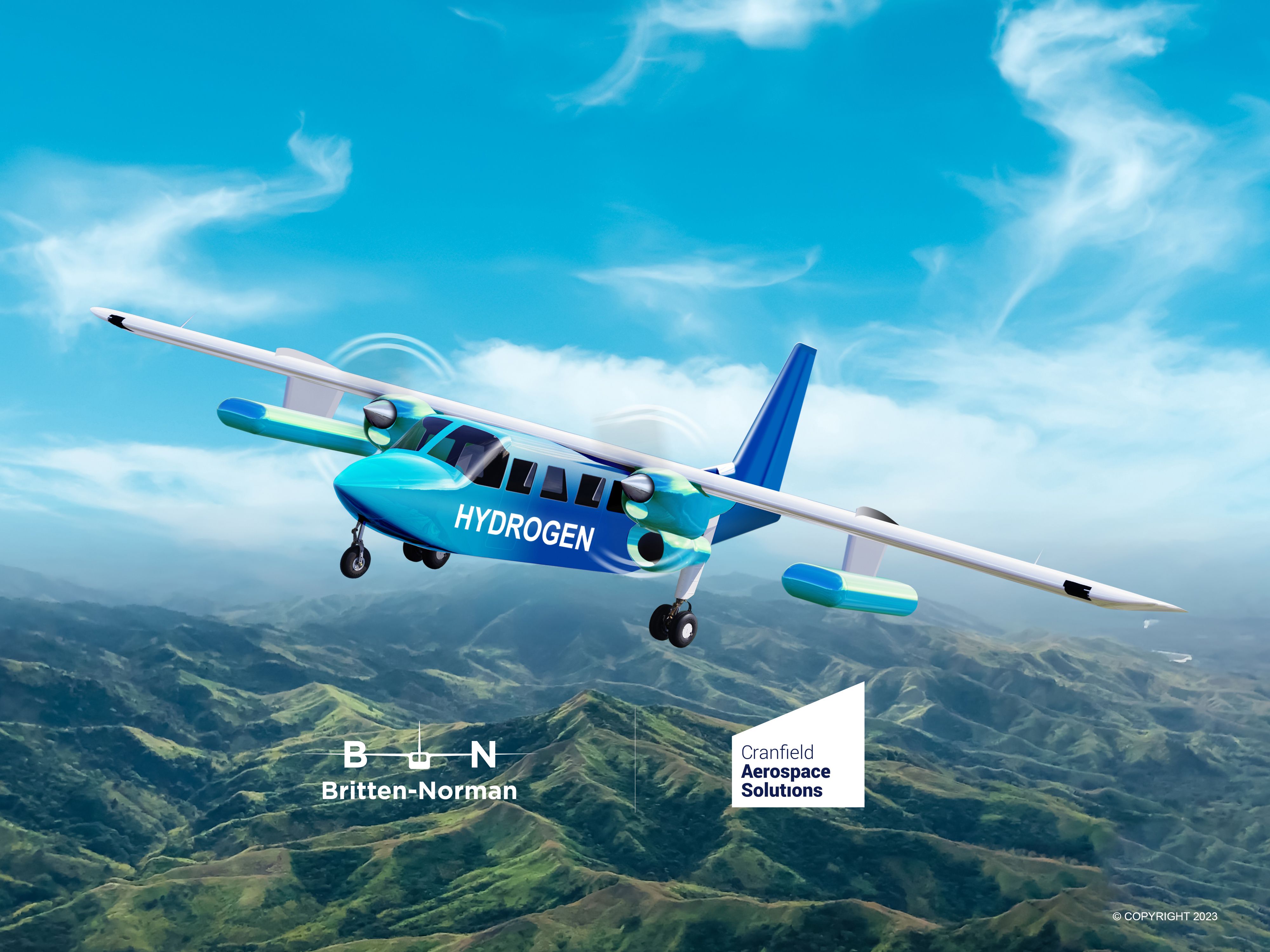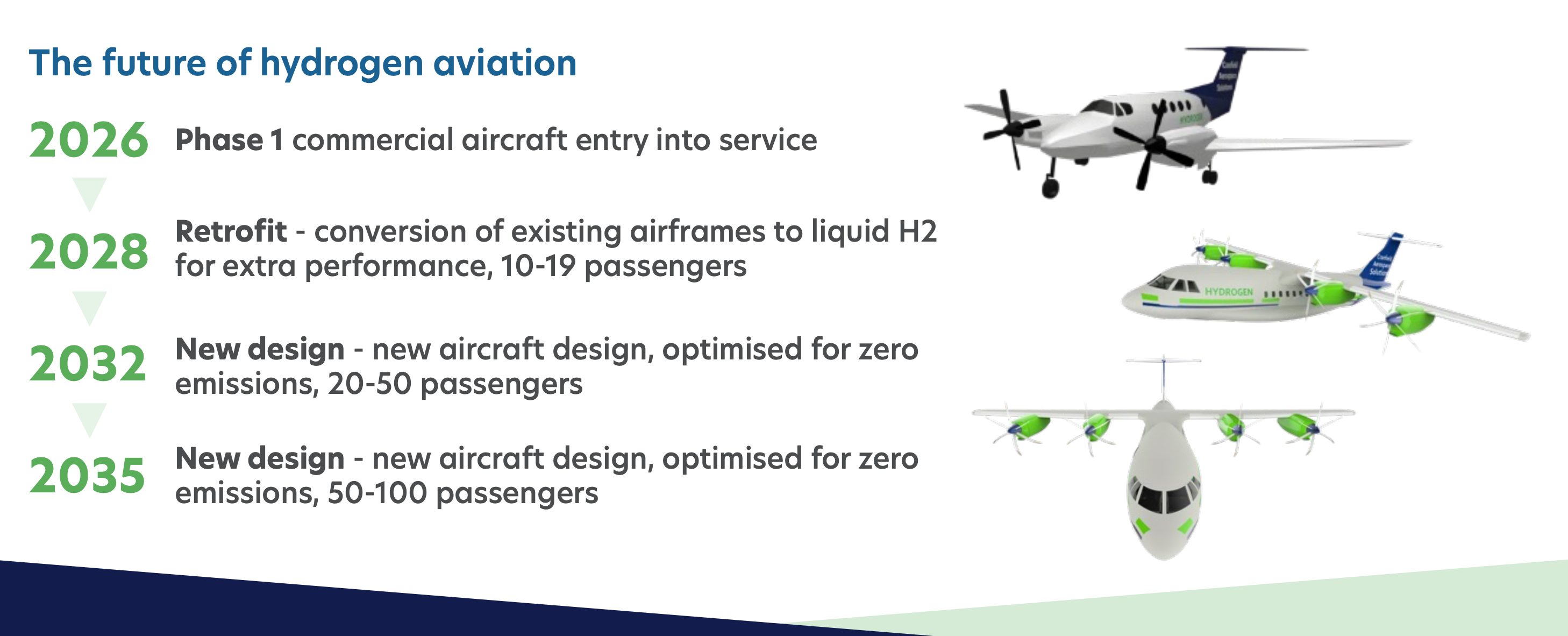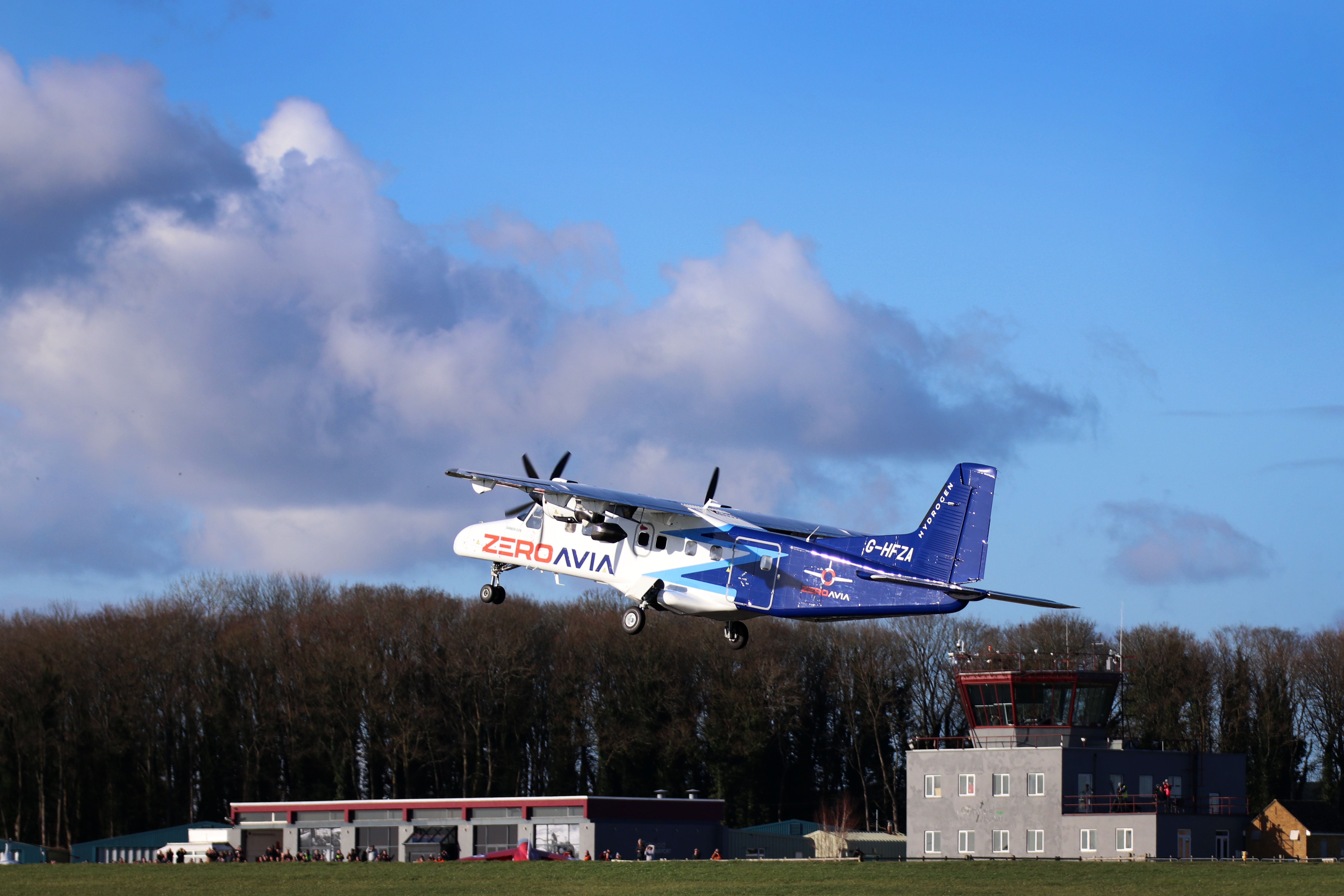The race to develop a zero-emissions airplane just got hotter, as stalwart UK manufacturer Britten-Norman is set to merge with industrious green aviation innovator Cranfield Aerospace Solutions (CAeS). The merger will bring together two powerful companies in the sustainable aviation field, one with more than six decades of aircraft manufacturing experience, and the other leading the way in alternative propulsion systems.
The merger is due to complete in mid-2023, subject to the relevant approvals and due diligence. The combined company will be a brand-new entity, with £10 million ($12.4 million) in funding to be delivered by a consortium of CAeS investors. These include HydrogenOne, Safran Corporate Ventures, and the UAE-based investment firm Strategic Development Fund (SDF).
The new company has been formed in response to the increasing demand from airlines for a new aircraft that can meet their CO2 reduction ambitions. CAeS is pioneering the development of a hydrogen-electric fuel cell propulsion system, which it is already in the process of testing for the Britten-Norman Islander through Project Fresson. This merger will bring the two companies even closer, accelerating the development of this groundbreaking zero-emissions technology.
William Hynett, Chief Executive of Britten-Norman, noted,
“The merging of Britten-Norman and Cranfield Aerospace Solutions will create a new market leader in green aircraft manufacturing, bringing together joint strengths in aerospace manufacturing, certification and innovation. The investment will give a huge boost to UK aviation exports and will deliver the first Original Equipment Manufacturer (OEM) sub-regional aircraft powered by Hydrogen.”
Starting small
The first goal of the new company will be to bring a viable commercial aircraft into service, completely powered by hydrogen-electric. The base for this aircraft will be the nine-seat Britten-Norman Islander, an aircraft that has enjoyed more than half a century of production, and continues to be built today. The company is targeting an entry into service date as early as 2026.
Beyond that, there are ambitions to scale up the technology for larger airplanes. By 2028, it is targeting the retrofit of slightly bigger regional aircraft, in the 10 - 19 passenger range, converting existing aircraft to liquid hydrogen propulsion. By 2032, the firm aims to design and build a brand new aircraft, optimized for zero emissions, with a capacity of 20 - 50 passengers.
Further down the line, another new design is on the table. This will be the largest aircraft in the roadmap so far, seating from 50 - 100 passengers. While still in the regional aviation space, this could comfortably compete with existing models such as the Dash and ATR families.
Strong competition
Of course, the new combined Britten-Norman and CAeS entity will not be the only company chasing hydrogen-electric dreams. US-based Universal Hydrogen has already test flown a Dash 8-300 with a hydrogen-powered engine, although the aircraft also had to have two large hydrogen tanks onboard. And fellow UK innovator ZeroAvia completed a similar flight with a Dornier 228 testbed at the start of the year.
Further crowding the space is Airbus with its ZEROe project, which aims to develop a hydrogen aircraft by 2028. However, the Airbus project is stalled due to lack of availability of green hydrogen. Rolls-Royce are working with easyJet to test commercial-scale hydrogen engines, while relative newcomer HyPoint opened its UK hydrogen R&D facility last year.
While there are a few players in the space, not many partnerships bring together OEM expertise and technological innovation in quite this way. Cranfield has been leading the research and development of hydrogen propulsion for some time, while Britten-Norman’s legacy of six decades of manufacturing excellence speaks for itself. And the hydrogen aviation space is very new, and there is plenty of room for more innovators and ideas.
The new company will have some sizeable challenges ahead, not least concerning the supply of green hydrogen and, of course, the storage of enough H₂ onboard to power the airplane. Nevertheless, it will be interesting to see what comes out of this new entity in future years.

